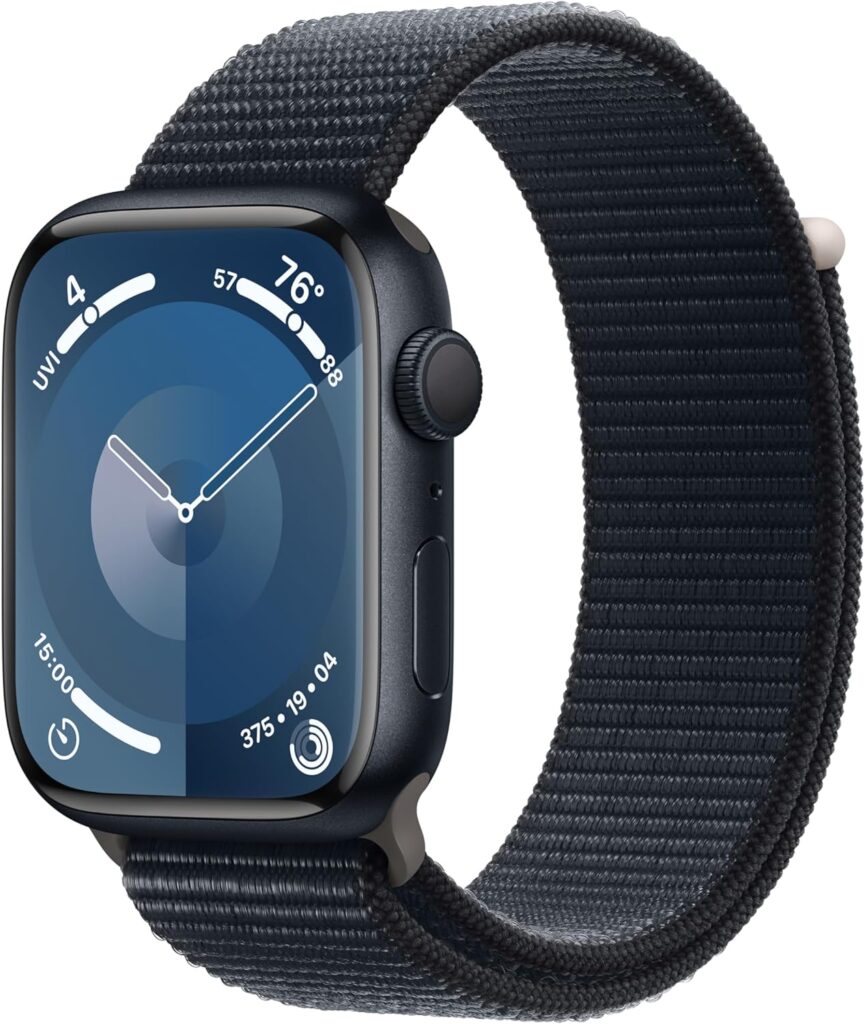Let’s chat about heart rate training. This method is the unsung hero of the fitness world, often overshadowed by more flashy trends. But don’t be fooled – it’s like the steady drumbeat that keeps an army marching in sync. The core idea here is to use your heart rate as a guide for exercise intensity.
Below we’ll list some of the best heart rate monitors for runners, cyclists, and anyone else interested in optimizing their cardiovascular fitness.

Why Heart Rate Training?
- Tailored Training: Heart rate training is like having a personal coach inside your chest, telling you when to push harder or take it easy. It ensures your workout is perfectly tailored to your fitness level.
- Prevents Overtraining: Imagine a world where you never accidentally push too hard and end up sprawled on the couch for days. That’s heart rate training for you!
- Maximizes Efficiency: It’s all about working smarter, not harder. By targeting specific heart rate zones, you get the most bang for your workout buck.

Activities that Heart Rate Training Befriends
Not all exercises are created equal when it comes to heart rate training. It’s like trying to use a screwdriver to hammer a nail – possible, but not ideal. The best pals of heart rate training are:
- Running and Jogging: The bread and butter of heart rate training. Whether you’re sprinting or doing a marathon, your heart rate monitor is your trusty sidekick.
- Cycling: Road biking or spinning, heart rate training helps you find that sweet spot between going hard and going home.
- Swimming: It’s a bit trickier with water involved, but modern heart rate monitors are like ducks – they love water!
- Group Fitness Classes: Yes, even in a room full of sweaty strangers, your heart rate monitor can help you keep your cool and train at the right intensity.
The Magic of Heart Rate Zones

Heart rate zones are like different gears in a car – each serves a unique purpose. To calculate your zones, you first need to know your max heart rate. The old-school way is to subtract your age from 220. So, if you’re 30, your max heart rate is 190 beats per minute (bpm).
The Five Zones
- Zone 1 (50-60% of Max HR): This is your warm-up zone. It’s like the appetizer before the main course – gets you ready for the action.
- Zone 2 (60-70% of Max HR): The fat-burning zone. Here, you’re cruising, burning calories but not panting like a dog on a hot day.
- Zone 3 (70-80% of Max HR): The aerobic zone. This is where you improve your cardiovascular and respiratory system. It’s the meat and potatoes of fitness.
- Zone 4 (80-90% of Max HR): The anaerobic zone. Things get serious here. It’s like a spicy dish – handle with care, but oh-so-rewarding.
- Zone 5 (90-100% of Max HR): The red zone. This is your high-intensity, short-burst zone. Not for the faint-hearted!
Each zone triggers different physiological changes, from improving your heart’s efficiency to enhancing your ability to use oxygen.
The Best Heart Rate Monitors: A Buyer’s Guide
 |  |
Now, let’s get into the meat of the matter – what are the best heart rate monitors? Here are some of the best options on the market:
- Garmin HRM-Dual
- Features: This heart rate monitor offers ANT+ connectivity and Bluetooth compatibility, making it a great fit for Garmin devices, smartphones, and even gym equipment. It’s known for its accuracy and long battery life.
- Compatibility: Works well with both iPhone and Android devices, and integrates seamlessly with Garmin smartwatches and apps like Strava and Apple Fitness.
- Advantages: Highly accurate, comfortable to wear, and has a user-replaceable battery.
- Disadvantages: It’s a bit more expensive than some other models, and lacks advanced metrics like running dynamics.
- Cost: Approximately $60-70.
- Wahoo TICKR X
- Features: The TICKR X is not just a heart rate monitor; it also tracks calories burned, workout duration, and has an internal memory for training without a phone.
- Compatibility: Compatible with both iOS and Android devices, it works with popular apps like Strava and can sync with Apple Watch and other wearables.
- Advantages: Offers advanced motion analytics and dual-band technology.
- Disadvantages: Can be uncomfortable for long periods, and some users report connectivity issues.
- Cost: Around $80.
- Polar H10
- Features: Known for its top-notch accuracy, the Polar H10 is a favorite among athletes for its comfortable fit and reliable data.
- Compatibility: It works with iOS and Android, supports Bluetooth and ANT+, and can connect to a wide range of devices, including smartwatches and bike computers.
- Advantages: Extremely accurate, waterproof, and has a long-lasting battery.
- Disadvantages: It’s on the pricier side, and the Polar app offers limited insights compared to competitors.
- Cost: About $90.
- Fitbit Charge 4
- Features: This is a wrist-based heart rate monitor and fitness tracker that offers continuous heart rate tracking, sleep tracking, and built-in GPS.
- Compatibility: Integrates well with both Android and iOS devices and syncs with Fitbit’s extensive health ecosystem.
- Advantages: Provides all-day tracking, has a built-in GPS, and includes Fitbit Pay.
- Disadvantages: Less accurate for high-intensity workouts compared to chest straps, and the battery life can be short with the GPS on.
- Cost: Around $150.
- Apple Watch
- Features: Beyond being a smartwatch, it offers accurate heart rate monitoring, an ECG app, and fitness tracking features.
- Compatibility: Primarily designed for iPhone users, it integrates exceptionally well with the Apple ecosystem, including Apple Fitness+.
- Advantages: Offers a wide range of health and fitness features, including blood oxygen monitoring and an always-on display.
- Disadvantages: Expensive, and battery life is limited compared to dedicated fitness trackers. Less compatible with Android devices.
- Cost: Starting from $399.
Each of these heart rate monitors has its unique strengths and potential drawbacks, catering to different needs and preferences of athletes. Whether you prioritize accuracy, cost, or all-in-one features, there’s a device out there that’s just right for your fitness journey.
The Scholarly Scoop: High-Impact Articles
Here are three groundbreaking articles that dive deep into the benefits of heart rate zone training:
- Grässler, B., et al. (2021). Effects of Different Training Interventions on Heart Rate Variability and Cardiovascular Health and Risk Factors in Young and Middle-Aged Adults: A Systematic Review. This review found that various training interventions, including those based on heart rate variability, have positive effects on cardiovascular health and risk factors. It highlighted the benefits of such training in enhancing heart rate variability, an important marker of cardiovascular health and fitness, especially in young and middle-aged adults.1
- Zhu, Z., et al. (2022). A fitness training optimization system based on heart rate prediction under different activities. This study developed a fitness training optimization system that uses heart rate prediction for different activities. It demonstrated the effectiveness of this system in enhancing exercise planning and training intensity decisions, underscoring the importance of personalized heart rate data in optimizing fitness training outcomes.2
- Herzig, D., et al. (2018). The Association Between Endurance Training and Heart Rate Variability: The Confounding Role of Heart Rate. This research explored the relationship between endurance training and heart rate variability, emphasizing the confounding role of heart rate itself. The findings suggest that while endurance training positively influences heart rate variability, heart rate should be carefully considered as a variable in the assessment of training adaptations to avoid misinterpretation of the data.3
Further Reading: Expand Your Knowledge
Curious to learn more about heart rate zones? Check out these resources:
- Heart Rate Training for Sports Performance by Verywell Fit: An overview of heart rate training, including how to calculate your maximum heart rate, how to use heart rate zones to target different levels of intensity, and how to use heart rate training to improve your cardiovascular fitness and sports performance.
- How to Use Heart Rate Training for Effective Workouts by Healthline: This article provides a more detailed explanation of heart rate zones, and how to use them to design effective workouts. It also includes information on how to track your heart rate during exercise, and how to adjust your intensity based on your heart rate.
- Heart Rate Training for Cardio Exercise by National Strength and Conditioning Association: A comprehensive overview of heart rate training for cardio exercise, including the physiological benefits of heart rate training, how to use heart rate training to improve your cardiovascular fitness, and how to use heart rate training to prevent injuries.
- Heart Rate Training: A Beginner’s Guide by Runner’s World: A great resource for beginners who are new to heart rate training. It provides a simple explanation of heart rate zones, and how to use them to set goals for your workouts.
- Heart Rate Training: Everything You Need to Know by Coach: A comprehensive guide to heart rate training, covering everything from the basics of heart rate zones to how to use heart rate training to improve your performance in specific sports.
Whew! That’s a whirlwind tour of the world of heart rate monitors and how they can revolutionize your workout routine. Whether you’re a seasoned athlete or just starting out, understanding and utilizing heart rate data can be a game-changer in your fitness journey. Keep that heart beating and happy training! 🏃♂️💓🚴♀️
Citations:
